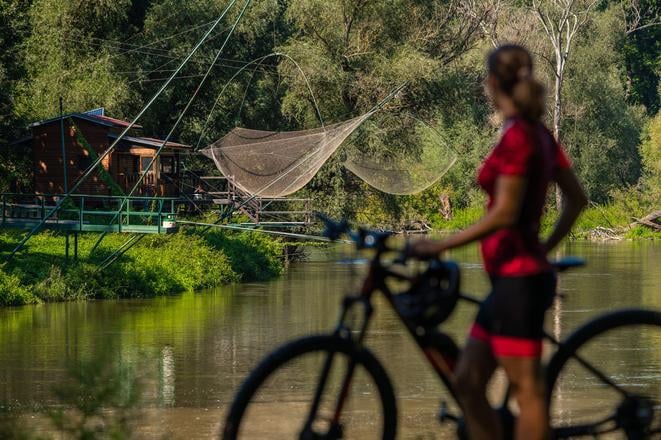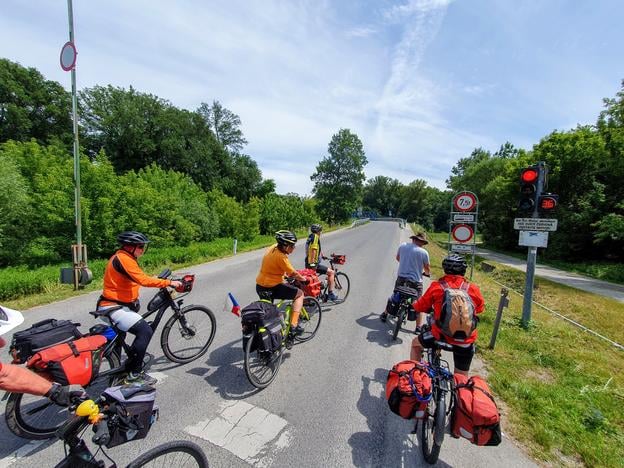After several kilometres of cycling along the former border guard signal path – which initially runs alongside the Danube and then follows the Slovak-Austrian border on the Petržalka side of Bratislava – we, a group of cycling enthusiasts in our 50s, stop by a replica of the Iron Curtain. It’s so overgrown with creeping plants and wild greenery that it’s nearly impossible to distinguish its individual lines. That doesn’t change the fact that this was once the site of a heavily guarded, near-impenetrable barrier system of fences and obstacles designed to prevent passage between Western and Eastern Europe. Failed attempts to cross it ended, at best, in imprisonment – and at worst in death.
The Slovak section of EuroVelo 13
is nearly 90 kilometres long
with the exception of a few short stretches, it features asphalt or other sealed surfaces and runs mostly along roads with no or very low motor traffic, predominantly through natural surroundings (excluding the urban area of Bratislava)
the entire Slovak section is marked as a red cycle touring route
The “intruders”, as the totalitarian regime called those who attempted to cross the border illegally, were shot, electrocuted, blown apart by mines, or torn apart by dogs. On the Slovak section of the Iron Curtain, there were at least 42 such victims.
The heavy silence is broken by a child’s question: “But why did people even try to cut through that fence? Look, there’s a border crossing just a few metres from here. It’s much easier to go through there.”
EuroVelo 13 – also known as the Iron Curtain Trail and stretching more than 10,500 kilometres from north to south across Europe – offers a powerful opportunity to remember, and explain why.
Historical memory and a sustainable way of travelling
The initiator and godfather of the Iron Curtain Trail idea is German former MEP Michael Cramer. He first presented the concept of a cycling route along the former border between democratic West and totalitarian East in 2001, with the aim of linking historical memory, personal exploration of the Iron Curtain areas, and a sustainable mode of travel, explains Ján Roháč from the Ekopolis foundation, which has been supporting the development of the route in Slovakia for nearly 20 years in various ways.
Together with his team and working step by step, Cramer proposed the route’s alignment and, since he worked in Brussels as an MEP, managed to have the Iron Curtain Trail included in the EuroVelo network of routes by the European Cyclists’ Federation, under route number 13. The initiative was later taken over by the European Cyclists’ Federation and its partners in the respective countries. The cycle route passes through 20 countries, stretching from the Barents Sea to the Black Sea.
“Although it’s still under development, it is already marked on maps, and many sections – including the Slovak one – are marked out in the field and can be travelled in real life,” says Ján Roháč.




